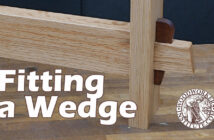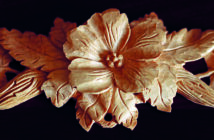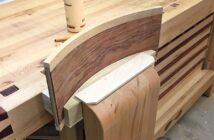What You Want to Know About Carving Knives
Peter Benson looks at selecting the perfect carving knife
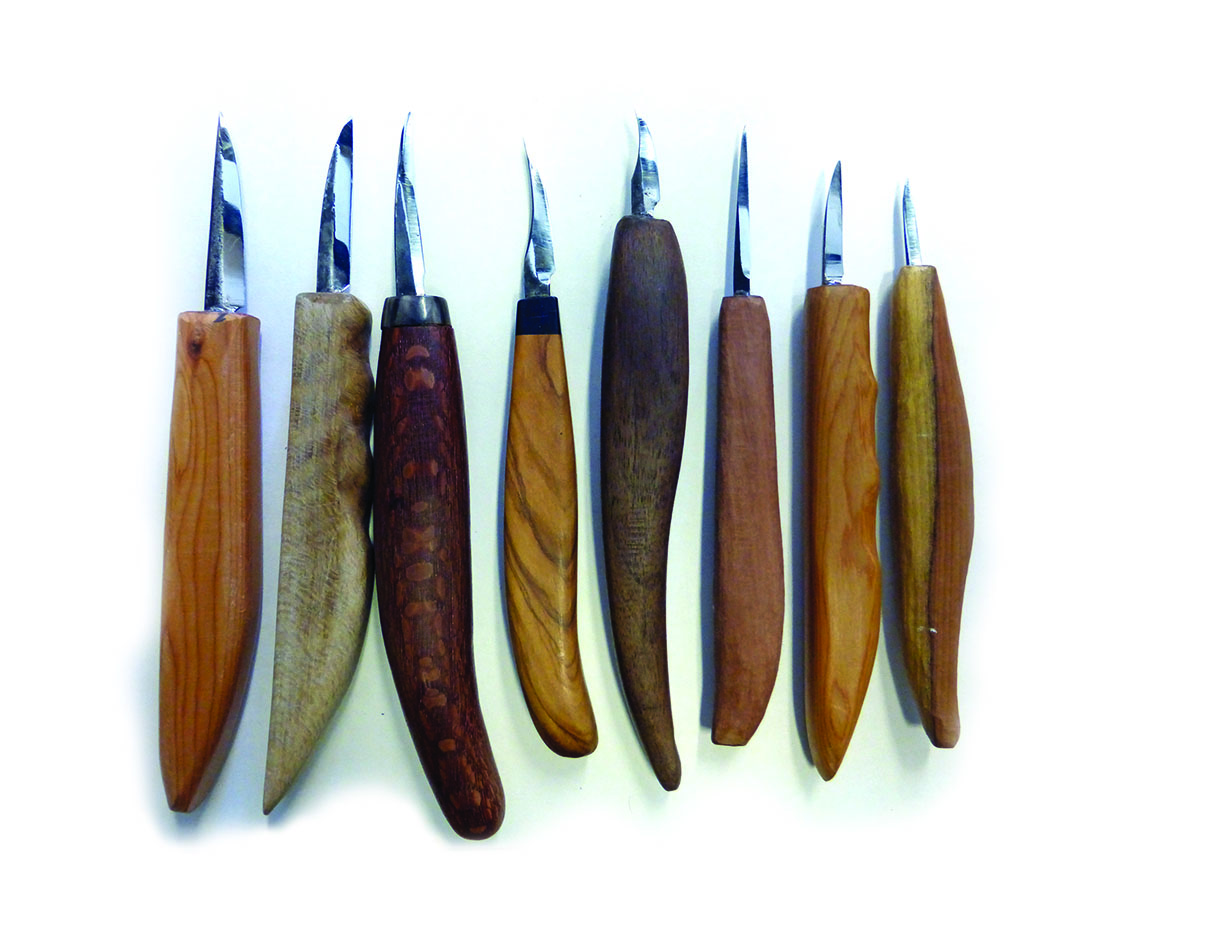
Blades by Nic Westermann, using home-made handles
The most common question I am asked is – how to sharpen tools and keep them sharp. Allied to this was the growing interest in carving with a knife – what knives to choose and how to keep them sharp.
Many of those who are of my generation can remember a time when almost every schoolboy would have a knife in his pocket or in a sheath on his belt. Sticks were cut into bows, arrows, swords and daggers for all our games as well as made into aircraft and model guns by those with a little more imagination. I can’t remember anyone ever using a knife in a threatening manner and the most dangerous activity for which they were used was to throw them at any available tree to see if they would stick in.
In these days of protecting young children from almost anything remotely dangerous and the incidence of knife crime it is rare for any child to have experience with anything sharp, yet knife carving is a great activity that can be hugely creative and enjoyable with very little financial outlay.
In the United States almost every town and city will have carving clubs with courses offered in knife carving (or whittling) and these will meet in senior centres, garages or local halls with nothing but tables and a coffee pot. Not too many years ago it would have been rare for such a group to exist in this country, but gradually enthusiasts have found that you don’t have to invest a large amount of well earned cash to be able to start woodcarving. This was backed up by the numbers of people who asked me questions about what sort of knives were suitable, where to get these and how to get and keep them sharp.
The answer to the first question is relatively simple. You can use almost any kind of craft or pocket knife as long as it will cut wood cleanly. I have seen some amazing carvings done with only a Stanley knife, but I wouldn’t recommend it as the most suitable by any means. What I am saying is that, if you have a folding or fixed blade pocket knife you can start with that and see how you get on.
I will mention here that there are now laws about carrying knives that you need to understand. Any folding pocket knife with a blade of less than 75mm long is legal to carry in your pocket. Any fixed or locking blade knife is not, unless, to quote, ‘you have a very good reason’.
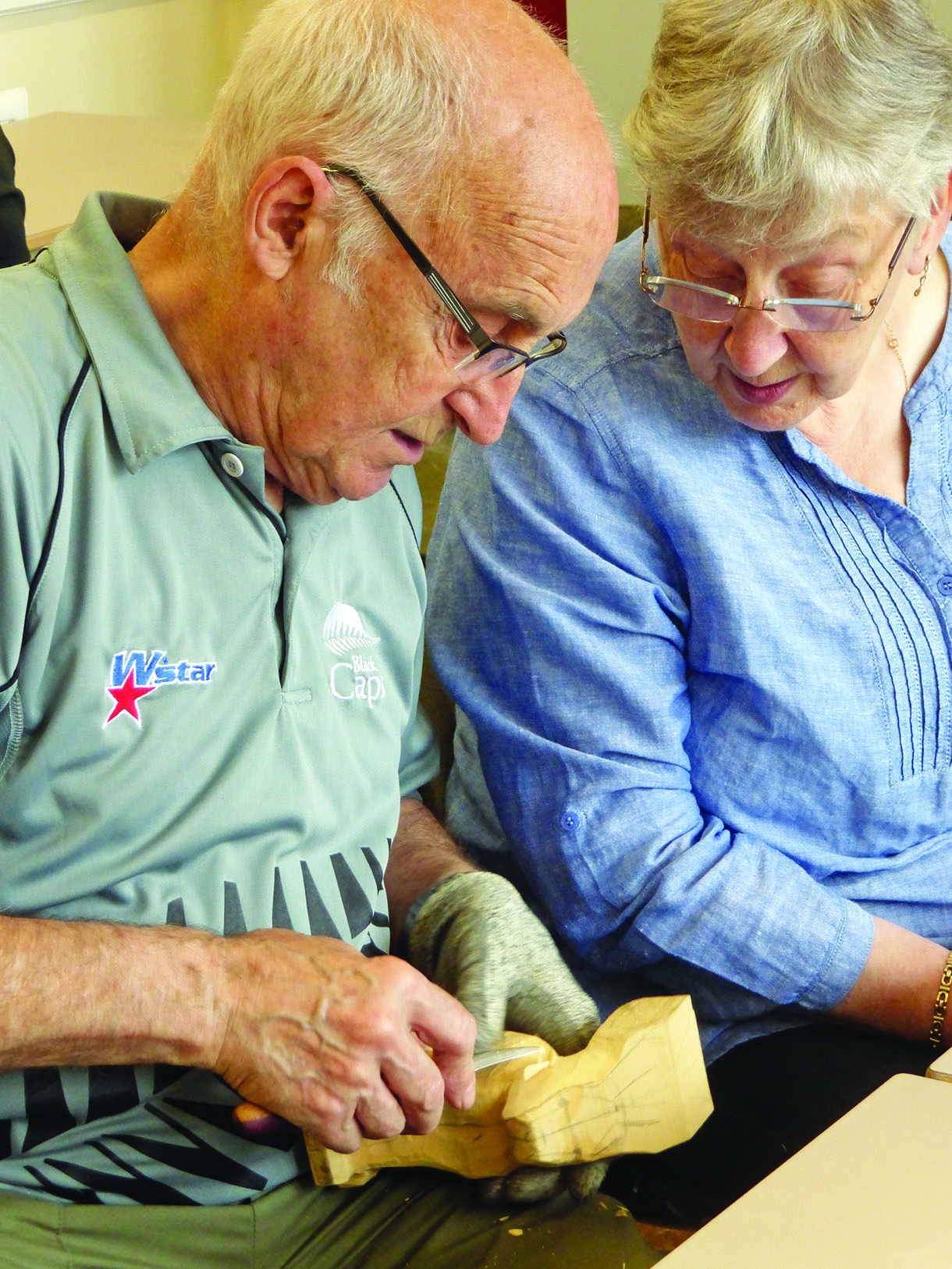
Peter Benson demonstrating how to use a knife
Knife selection
There is a huge selection of different knives out there that will all do a very good job if kept sharp and which ones you choose are a matter of personal preference, but I would recommend the following points to consider:
Comfort
The most important point is that the knife should be comfortable in your hand with a handle that is not so thin that your fingertips are pressed into the palm of your hand.
For roughing out you might like a bigger or heavier blade, whereas you could do with a narrower pointed blade for general use. Each of these work better with a shallow or flat bevel as this makes its passage through the wood much easier. For fine detail work you could find that a smaller blade is best with a slightly curved bevel acting as a kind of depth gauge as it will generally be used to cut into the wood rather than through it. More about this later.
The reason for the general knife being slim is that you need to be able to spin the knife in a cut to get a smooth curve. Many knives, particularly those with interchangeable blades or made from thin flexible steel are often not only too wide at the tip but can be very difficult to sharpen if they get blunt. Choosing a slim bladed knife will pay off in the long run.
Many European knives have a very long bevel on the blade, often extending to the whole width. Avoid these for carving in any hard woods as the very thin cutting edge can easily degrade and break away. Ideally you need a blade that has a bevel that extends to about half the width of the blade giving you more strength. Those with a bevel that curves over the whole width of the blade work very well as long as the area immediately behind the cutting edge is flat, but they can be a little more difficult to strop effectively. The choice is yours. The widest range of suitable knives can be found in the United States and I recommend that you look at adverts or on the internet before buying.
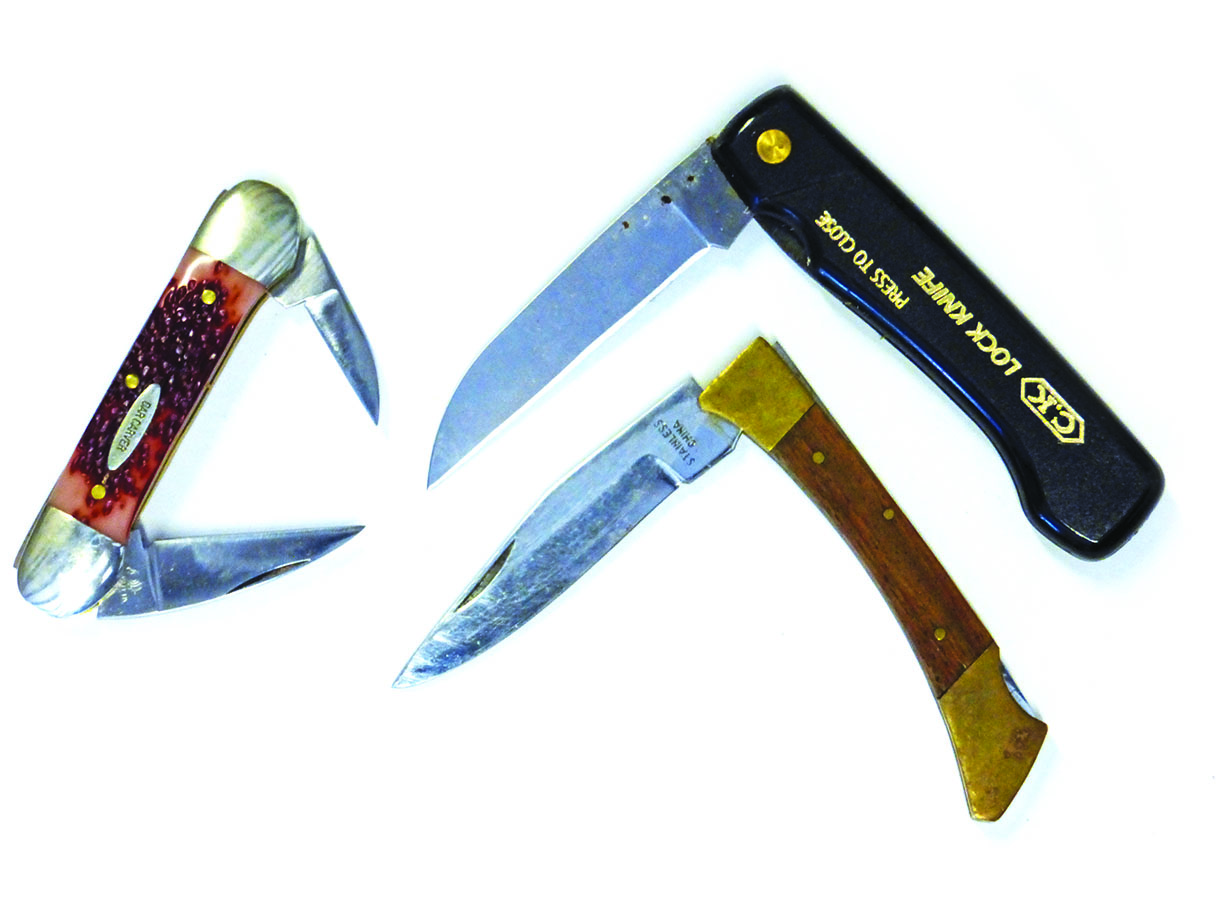
Pocket knives can make ideal carving knives
Price
Some knives can be quite expensive and there is no doubt that, in many cases you get what you pay for, but there is no guarantee that all knives will suit you so don’t spend a lot on your first knife – work with it, play around with the design of the handle and blade until you come up with something that is ideal. Then, either
buy a knife of the pattern you want or get a blade and make your own handle.
If you intend splashing out on a good knife, I feel that your best route is to buy a really good blade and make your own handle rather than spending more than this on a knife that may not suit. Most of the blades available can easily be fitted into a drilled piece of suitable wood and secured with epoxy glue before shaping the handle to fit your hand.
My final comment on this aspect is to not base your choice on the availability or advertising of knives. The fact that you see them readily available doesn’t necessarily mean that they are the most suitable for you. Try a knife out before you part with any money. There will be other carvers with knives or you may see them at shows. You could even try shaping an old penknife and see what shape of blade suits you, then look for something similar. I know that it is a waste of time for me to have a knife
with a curved blade as I invariably end up cutting myself, so I avoid these. Others, however, love them so the problem is only mine.
Many of my carvers use a cheap, plain knife, available from the USA that they modify to suit their individual needs. The pictures here show what can be done with some of the knives and blades from the UK and USA.
Condition
Once you have your knife you should be able to get carving as only occasionally should you have one that will not cut cleanly. The bevel on the blade should be flat, at least for a distance from the cutting edge. You should only need to hone, or strop this regularly to keep
it in tip top condition.
No knife is any good if it isn’t kept sharp and this doesn’t have to be difficult. A diamond plate is, in my opinion, the best thing for getting the bevel flat as you can see the edge at all times as no lubricant is needed. You need to use this, keeping the bevel absolutely flat until there is a small burr all the way along the cutting edge. This means that you have gone right up to the cutting edge but this edge is ragged rather than smooth. Repeat for the other side of the blade. Then, stropping or honing on a leather or webbing strop, again keeping the bevel flat, until the burr disappears, will turn this ragged edge into a smooth, sharp edge that is needed to produce a clean cut. All that will then be necessary is to strop it after around each 20 minutes or so of use. Doing this regularly and carefully will avoid having to go back to the diamond plate for a considerable time as, once the edge is smooth, you don’t really want to make it ragged again. The more you strop it, the better it should be.
Safety
Finally, don’t forget to get yourself a good safety glove and wear it all the time you are carving – on the
hand you use to hold the wood. Most of my carvers now wear a pair of safety gloves as it is easy to cut
the thumb of the knife hand.
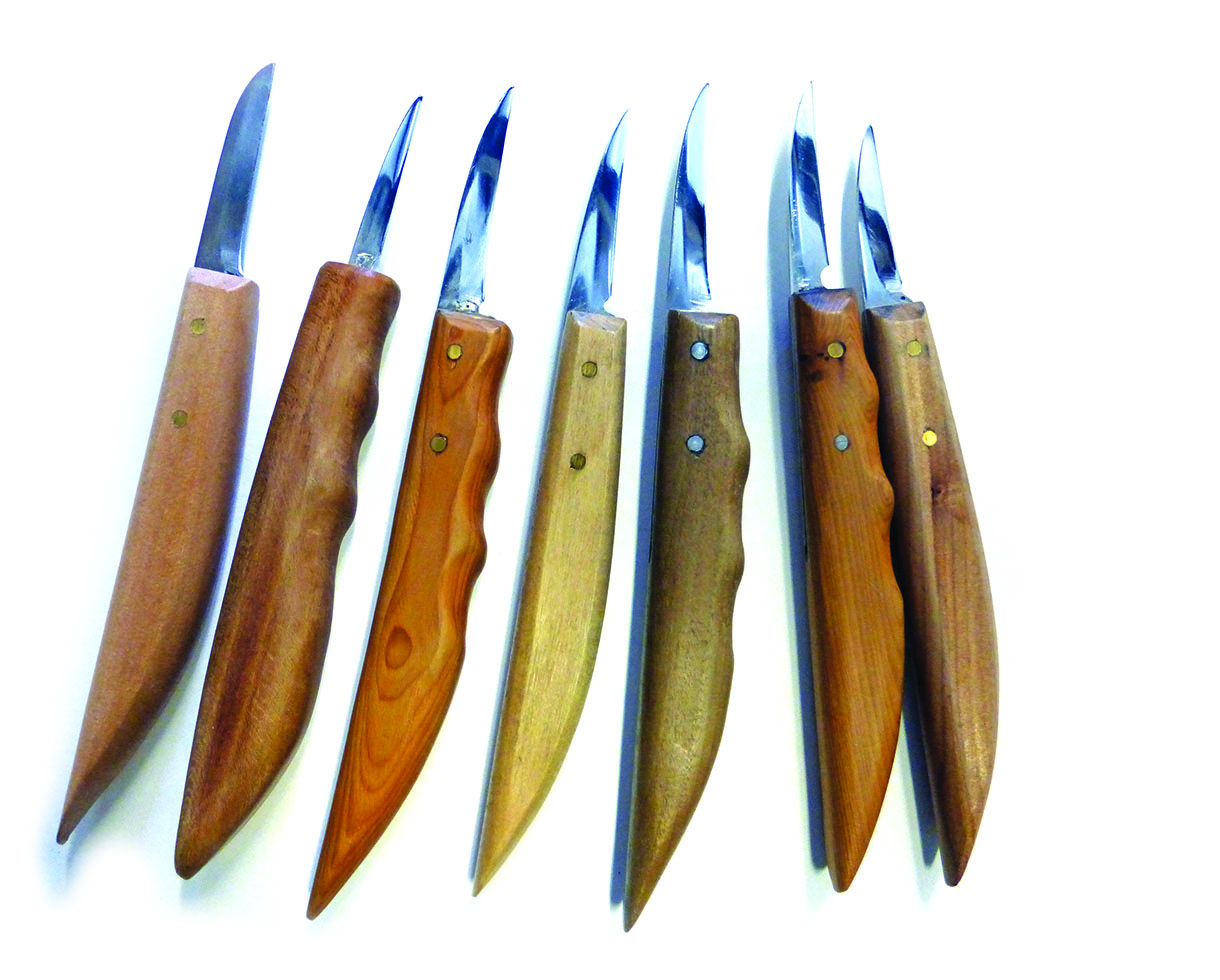
Knife blades from R. Murphy in the US. On left is standard knife and the rest are blades modified and/or handled by carvers

